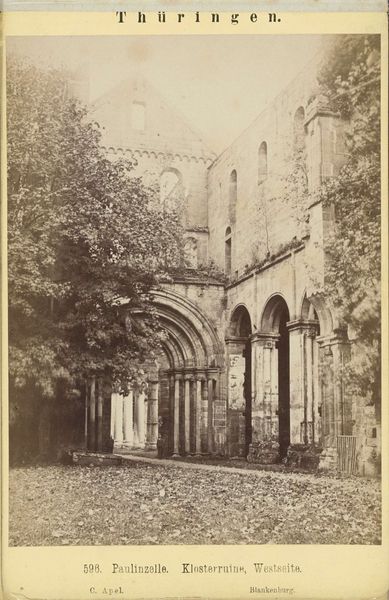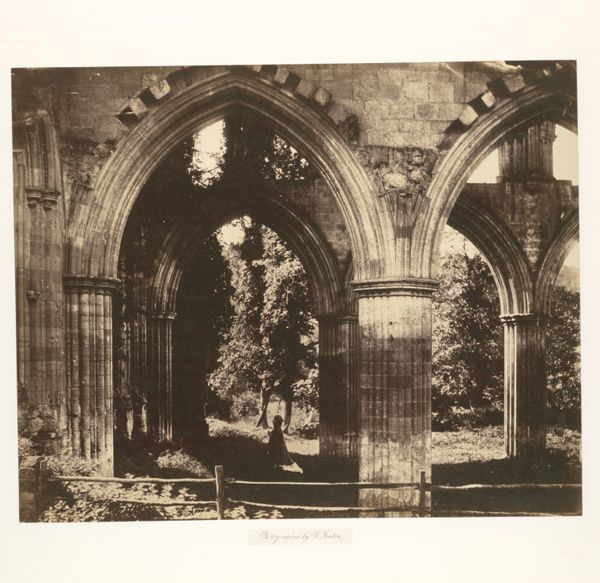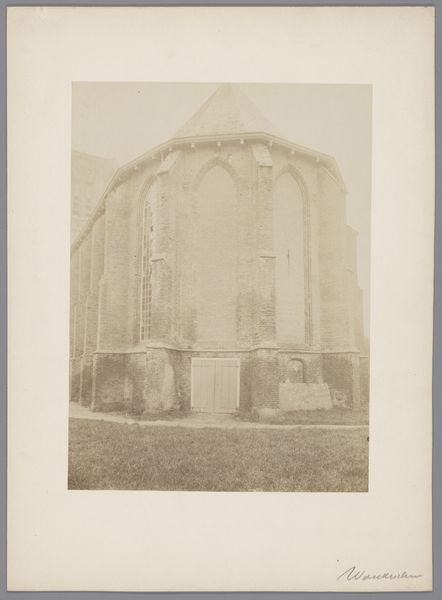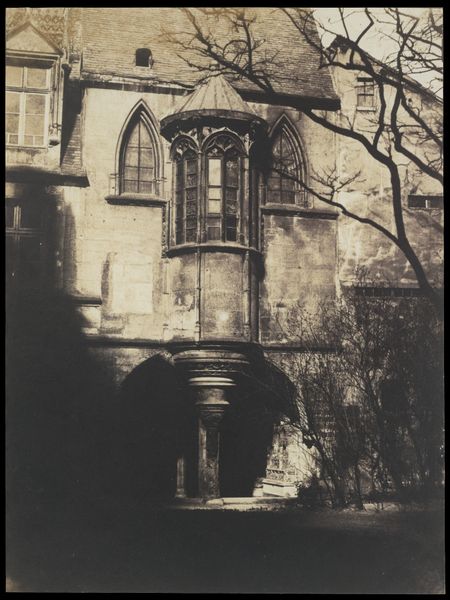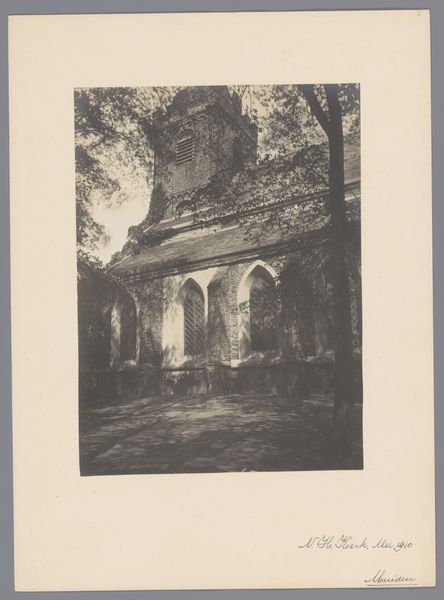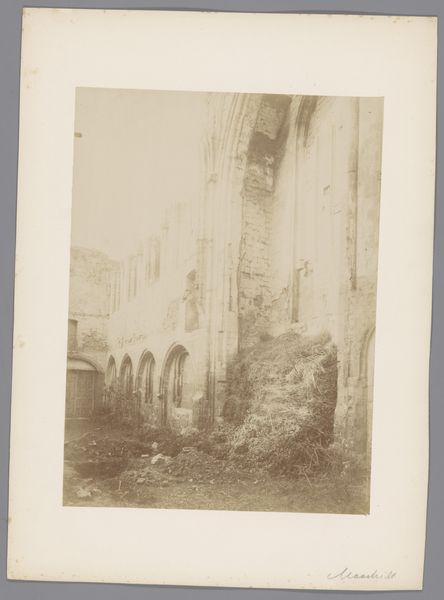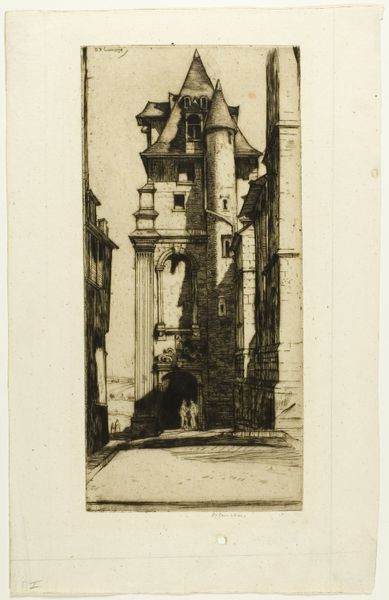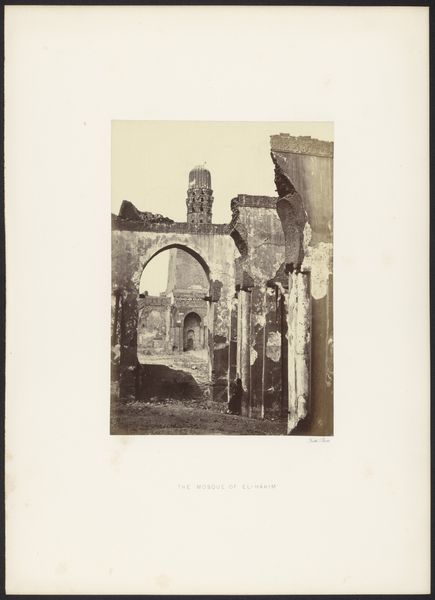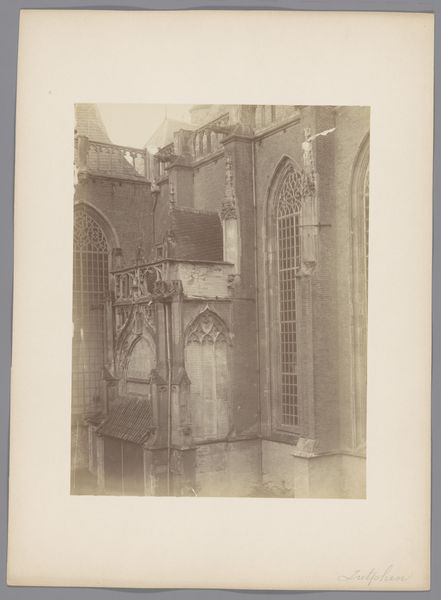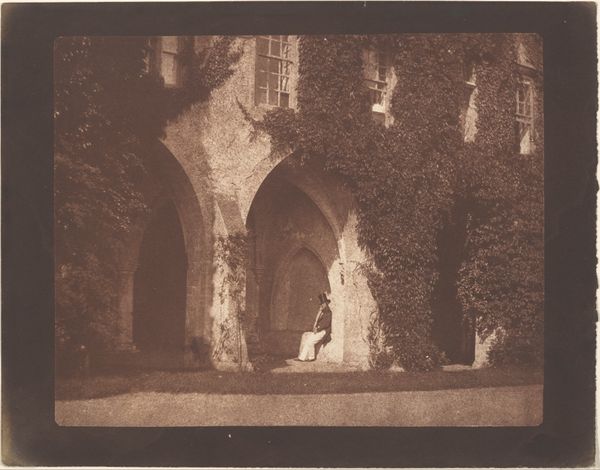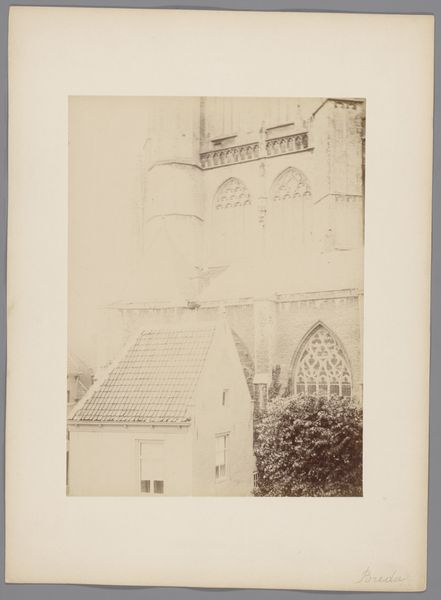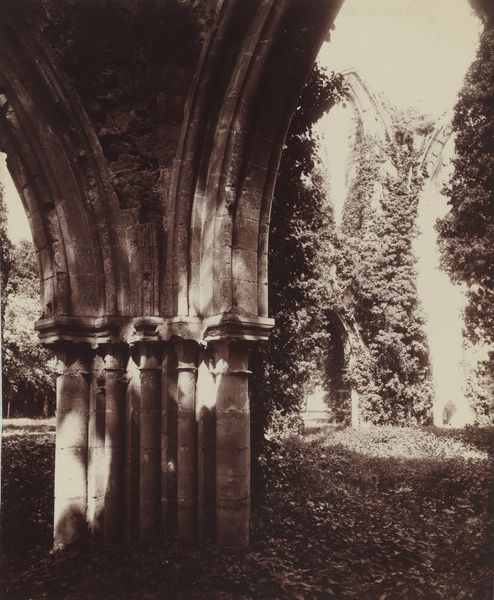
Dimensions: height 263 mm, width 198 mm, height 361 mm, width 294 mm
Copyright: Rijks Museum: Open Domain
Médéric Mieusement made this photograph of the Ruïne van de Abdij van Jumièges using a process that was still relatively novel at the time. Mieusement would have carefully coated a glass plate with light-sensitive chemicals, exposed it in the camera, and then developed the resulting negative. This was no small task, requiring both technical skill and patience. Photography in the 19th century was a chemical process as much as it was an artistic one, deeply rooted in industrial innovation. Unlike painting or sculpture, photography was immediately tied to mass production and distribution. Here, the ruin itself is a testament to time's passage and human endeavor, with its crumbling stone speaking of vanished labor and lost faith. Mieusement's photograph captures not just the physical presence of the ruin, but also its cultural significance, turning it into a commodity that could be reproduced and consumed by a growing audience eager for images of the past. It is a reminder that even the most seemingly straightforward images are products of intricate processes.
Comments
No comments
Be the first to comment and join the conversation on the ultimate creative platform.
